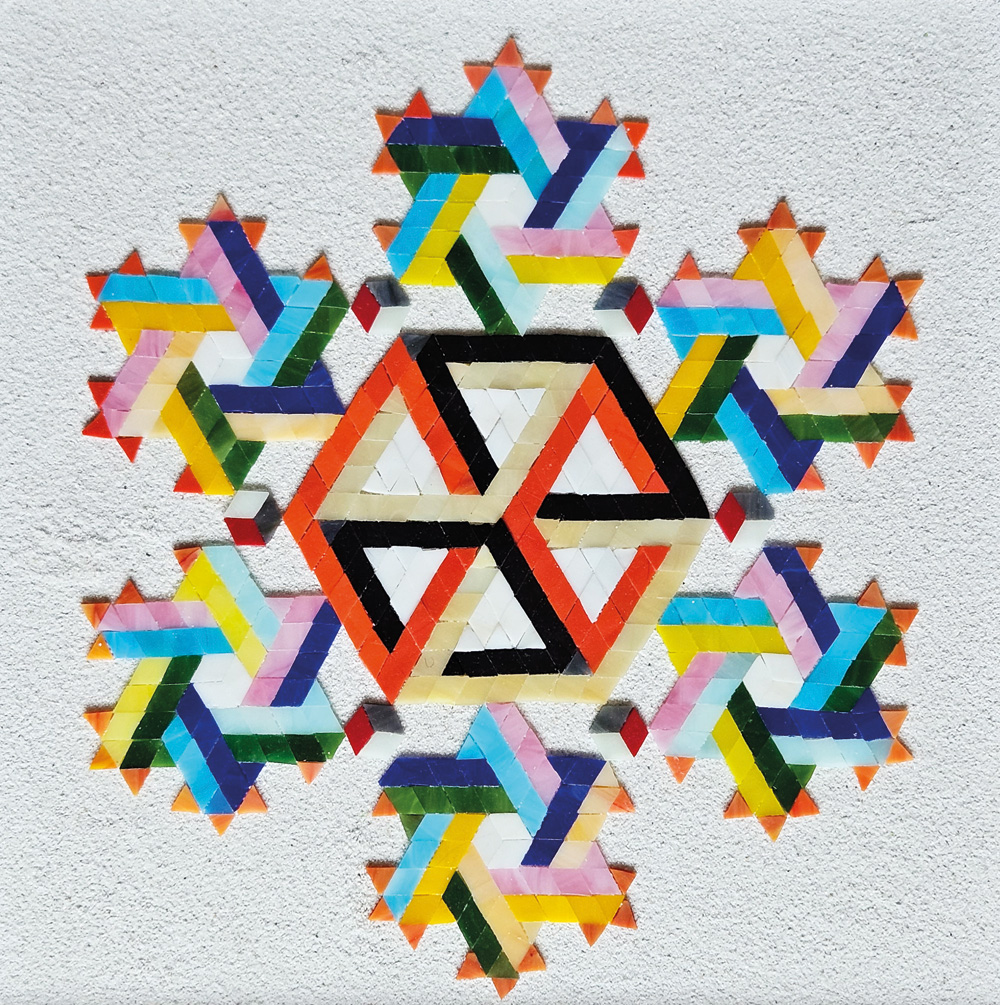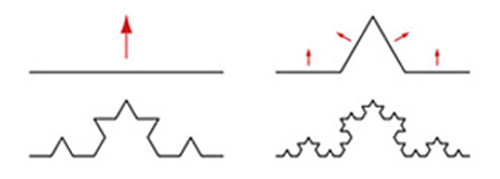| Stomachion | |||||
 |
Koch Snowflake The Koch snowflake is named after the Swedish mathematician Helge von Koch (1870-1924) and is one of the earliest described fractals in the history of mathematics. A fractal is a mathematical or geometric object that repeats itself at different scales in its structure. The construction process is best understood with the related object of the "Koch curve." A line segment is divided into three equal parts. Then, the middle third is removed, and an equilateral triangle with the same side length as the segments is erected above it. This process is repeated for each of the now four segments. (Divide into three parts, replace the middle one, and so on). With each step, the length of the curve increases by a factor of 4/3. After several hundred iterations, a 2.5 cm long starting line will grow into a curve longer than the diameter of the visible universe. In principle, the curve can become infinitely long. For the Koch snowflake, an equilateral triangle is the starting point, and the procedure is carried out with each side as described above for the Koch curve. The special feature here is that the perimeter of the snowflake can become infinitely long, even though its area remains limited. (8/5 times the area of the original triangle). Fractals play an important role in mathematics and the natural sciences for understanding and describing complex and chaotic phenomena such as coastlines, tree structures, blood vessels, turbulence, electrical discharges, genetic structures, as well as in texture and pattern recognition in image processing. |
The fractal "Koch snowflake" formed from an "Impossible Cube" in the center and pentagram-forming "Penrose triangles." (Glass mosaic on lightweight panel, 40 x 40 cm). |
|
|
